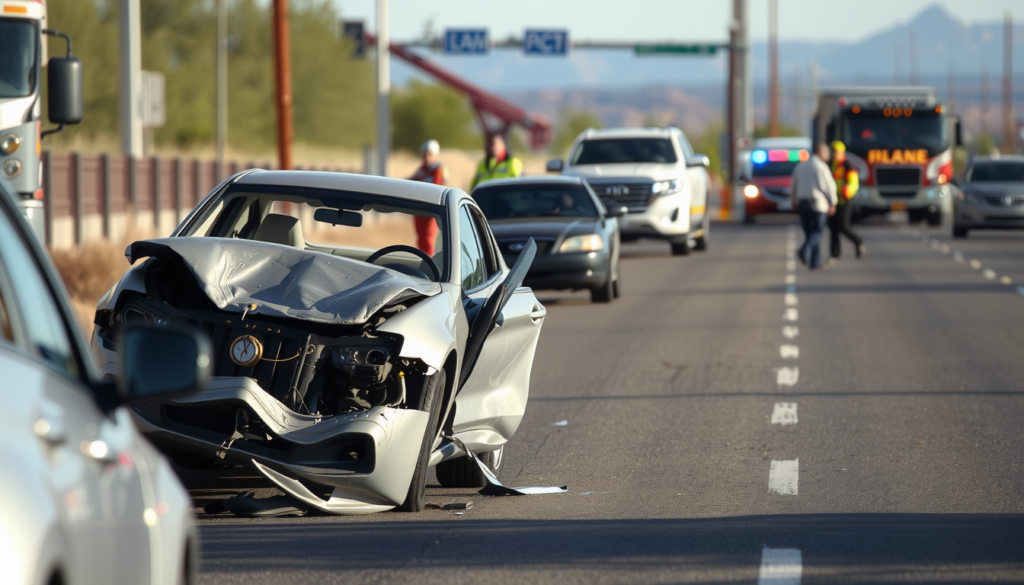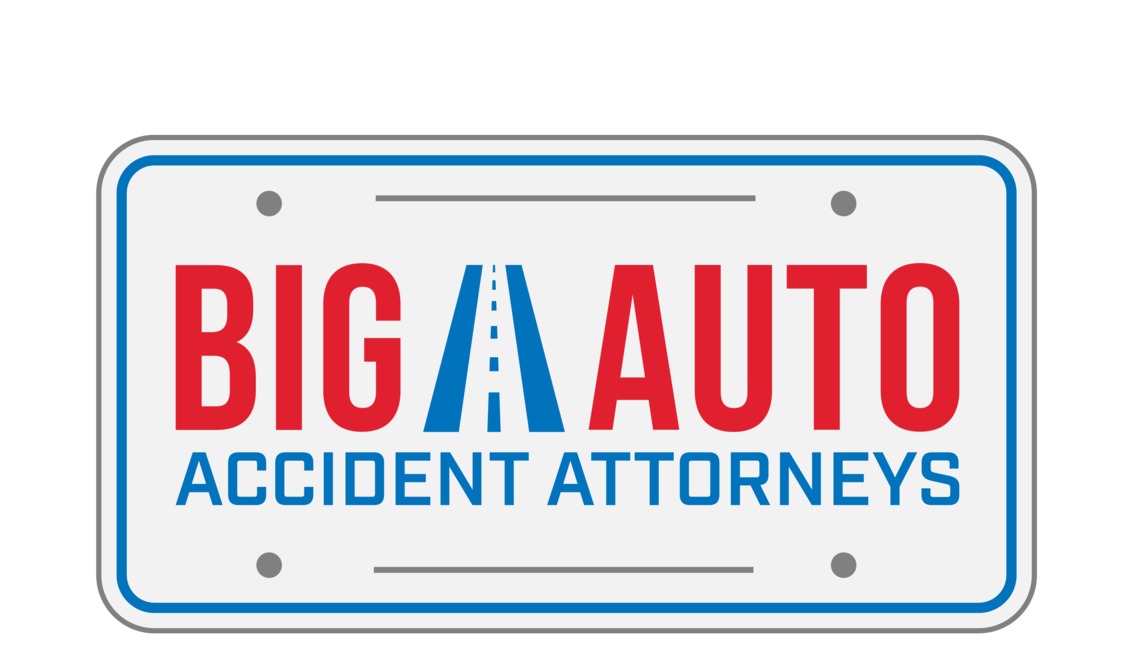What If The Other Driver Leaves The Scene Of The Accident (Hit-And-Run)?
FREE CASE REVIEWFew things are more shocking and stressful than being involved in a car accident. That stress is taken to a whole new level if the driver who hit you speeds off without exchanging information.
Hit-and-run accidents raise immediate questions: Who will cover the damage? What should you do next? And how can you protect your rights?
If you have been the victim of a hit-and-run, understanding your legal options is important. In this article, we’ll break down the essential steps to take after a hit-and-run, how to work with law enforcement and insurance companies, and what legal remedies may be available to help you recover compensation.
What Is a Hit-and-Run?
A hit-and-run occurs when a driver involved in a collision leaves the scene without stopping to exchange information, provide assistance, or report the incident to the authorities.
This can happen in accidents involving:
- Vehicles
- Pedestrians
- Cyclists
- Property damage
Most jurisdictions consider a hit-and-run a criminal offense, particularly if the accident results in injury or death.
Why Do People Flee the Scene of an Accident?
In 2022, on average, 1 in 250 licensed drivers in the US were victims of a hit-and-run. Why is this an all-too-common occurrence?
There are several reasons why a driver might flee the scene after an accident, including:
- Driving without a license or insurance: Unlicensed or uninsured drivers may flee to avoid legal penalties or having their vehicles impounded.
- Intoxication: Drivers under the influence of drugs or alcohol may leave the scene to avoid DUI charges.
- Outstanding warrants or legal trouble: Individuals who are already wanted by law enforcement or who fear additional legal consequences may choose to escape rather than face arrest.
- Panic or fear: Sometimes, drivers panic and make irrational decisions in the heat of the moment. They may not fully comprehend the legal repercussions of fleeing the scene.
- Unawareness: In some cases, especially with minor collisions, drivers may not realize they’ve hit something or someone, though this is often a weak defense in court.
Immediate Steps to Take After Being the Victim of a Hit-and-Run
Even though the other driver has left the scene, your actions in the aftermath can make a difference in your safety, legal rights, and ability to seek compensation.
Ensure safety and seek medical attention
Your top priority should be your health and safety. Move to a safe location, check yourself and your passengers for injuries, and call 911 if medical attention is needed.
Emergency responders will also create a police report, which is essential for your claim.
Call the police immediately
Even if the damage appears minor, report the incident to law enforcement. A police report will document the facts of the accident and note that it was a hit-and-run.
This report serves as a key piece of evidence in both insurance claims and any potential legal proceedings.
Gather as much information as possible
Try to collect any details about the fleeing vehicle and driver. Even small bits of information can help.
This could include:
- License plate number (full or partial)
- Make, model, and color of the vehicle
- The direction in which the vehicle fled
- Description of the driver, if visible
- Contact information and statements of any eyewitnesses
- Photos of the scene, vehicle damage, and any debris
Notify your insurance company
Report the incident to your insurer as soon as possible. Stick to the facts and avoid giving a recorded statement without legal representation.
If you have uninsured motorist coverage, this may help cover your medical bills, property damage, and other losses resulting from the hit-and-run.

Consult a personal injury attorney
Hit-and-run cases can be complicated, especially when trying to recover compensation without identifying the at-fault driver.
An experienced personal injury lawyer can help you:
- Investigate the accident and work with authorities to identify the at-fault driver
- Understand your insurance coverage and benefits
- Negotiate with your insurance company to maximize your claim
- Coordinate with law enforcement to locate the at-fault driver
- File a personal injury lawsuit if the other driver is found
- Ensure you meet all legal deadlines
How Do Police Investigate Hit-and-Runs?
Police take hit-and-run accidents seriously, especially when injuries are involved. Their investigation typically involves several key steps:
- Reviewing surveillance footage: Officers may canvas nearby businesses or homes for security camera footage that may have captured the incident or the fleeing vehicle
- Collecting physical evidence: Debris left at the scene, such as broken lights or mirrors, can help identify the make and model of the vehicle
- Interviewing witnesses: Statements from eyewitnesses can provide crucial details like the vehicle description or direction of travel
- Searching for traffic or license plate readers: Many areas have automated systems that can capture vehicle information, aiding in identification
- Using paint transfer or vehicle parts: If there is a paint transfer or a part left behind, forensic analysis may help trace the vehicle
The success of an investigation often depends on the information available immediately after the crash. That’s why gathering as much detail as possible at the scene is a good idea.
Criminal vs. Civil Liability
Keep in mind that a hit-and-run involves both criminal and civil aspects. The state may pursue criminal charges against the offender for fleeing the scene, while you may pursue a civil (personal injury) case for damages.
A successful criminal conviction can sometimes support your civil claim, but criminal cases are handled independently of civil claims.
Legal and Financial Options After a Hit-and-Run
Being unable to identify the at-fault driver doesn’t mean you’re out of options. Victims of a hit-and-run may have several avenues for compensation.
Uninsured motorist coverage
If you carry uninsured motorist coverage on your auto policy, it can cover your injuries and damages when the at-fault driver is unknown or uninsured.
This type of coverage is designed for situations like hit-and-runs and helps pay for:
- Medical expenses
- Lost wages
- Pain and suffering
- Vehicle repairs
Collision coverage and Personal Injury Protection (PIP)
If you carry collision coverage, it may cover the cost of repairing or replacing your vehicle. Personal Injury Protection (PIP) no-fault coverage can help with medical bills regardless of who caused the accident. PIP may also cover lost income and rehabilitation costs.
Personal injury lawsuit
If law enforcement is able to identify and locate the hit-and-run driver, you may pursue a personal injury lawsuit against him or her.
This can potentially provide compensation for:
- Medical expenses
- Property damage
- Emotional distress
- Punitive damages
Get Help From a Car Accident Lawyer Today
A hit-and-run can make you feel powerless. You’re left to deal with injuries, expenses, and uncertainty, all while the at-fault party escapes responsibility.
However, you’re not without options. Prompt action, thorough documentation, and professional legal guidance can make a difference in your recovery and compensation.
If you have been the victim of a hit-and-run accident, it is recommended to seek legal assistance as soon as possible. Our experienced car accident lawyers can evaluate your case, explain your options, and fight for the compensation you deserve.
We take all car accident cases on a contingency fee basis. You don’t pay any upfront costs or fees. Contact Big Auto Accident Attorneys to schedule a free case evaluation.


